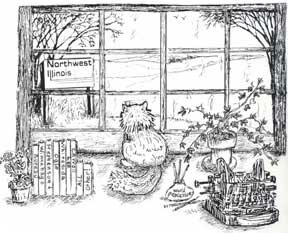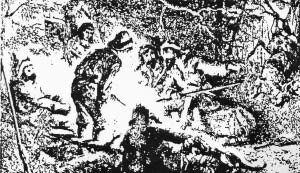
Discover rewarding casino experiences. 

Please Don't Quote Me PART IV — “June 25, 1850—We started at daylight. We passed a grave about which there is some mystery connected to the headboard where it was written ‘To the memory of Columbus who was found with his throat cut and in his hand in a death grip his pocket knife. The 19th day of June, 1850.’ There is an express mail here owned by Col. Estile intended to start for Weston, Missouri sometime in July. He charges 50¢ a letter package. I have no time to write. There are 200 teams in camp among them H. Pyle and Col. Ps division. We have two more sick men, Callahan and J.L. Reynolds with the same disease...Distance, twenty miles.” |
Seekers would never see again, one of those was told by George Hay who was sponsored by his uncle, Peter Hay. There apparently were three such incidents, that of thousands of buffalos en masse, so thick in numbers that the stream of them could not be breached. Perhaps, he said, there were a million but the herds passed constantly for two to three days without break ... Three times. Hay returned from California to become a progressive businessman, first as the editor of the “Carroll County Gazette,” Lanark, and then as a banker in Savanna and other mercantile sites. Always promoting the county. He also told of being in a gold mining camp where a murder occurred. The alleged killer was immediately brought to trial before judge and jury of six men that found him guilty of murder and would be duly punished. The judge ordered that they would sleep on the verdict and take another vote in the morning which took place. But the jury voted the second time, guilty, and he was hung by the neck until dead, as the saying went. Ever after the place was called, “Hangtown.” This was but one example of the rough history of the earlier day which, too often, we think of as quaint. However it may appear now, George Hay was fortunate to be in the “Mumma Party” that left Mt. Carroll on April 1, 1850; fortunate because David Mumma was the leader. There were nine men, two wagons and seven horses (not enough). On their overland trek the horses gave out and were traded for hardier oxen. In the Sierra Mountains they were so diminished in circumstance that they traded their entire outfit except for what they could carry, for a sack of flour. Those conditions didn’t reduce the reputation of David Mumma who was called a “splendid man” and known far and wide as such. He knew the outdoors like no one else ... Could cook any food available, tastily, how to make a comfortable camp and was shrewd in the choices he made for his charges. He ultimately returned from gold fields to work as before as a miner and trapper but then the itch for gold again had to be scratched, this time in Colorado territory, at Pike’s Peak where there was silver also. Many were excited about the strikes there and many were the “new” breed of mineral seekers such as one of the Judge Emmert’s sons who went. Others organized investment companies as they did a few decades later though there is little report of anyone finding a fortune. Mumma contracted “mountain fever” so came home to recuperate but died. David Mumma left a (patient) wife and six daughters, she being Mary Harris, a daughter of a frontiersman, George Harris, among the first settlers in Carroll County at Cherry Grove.
There is barely a hint of activity at the gold fields except that one raised potatoes and another gave scientific lectures to make enough money. Hardly the romantic panning for gold or striking the Mother Lode, although in the 1913 county history, C.L. Hostetter wrote of two who came back by a 1600 passenger steamboat from San Francisco (letting us know that many were returning). The pair were typical of returnees; one showing nothing for his time and energies and even to losing a sweetheart to another because he was gone so long. The other, a “gay gallant,” who wore a broadcloth cape and a gold nugget for a tie pin! He brought back a vest full of gold dust and Spanish doubloons. They’d seen their first railroad train while crossing the Isthmus of Panama, a portent of how times were a-changin’. Next Week — The end.
|




